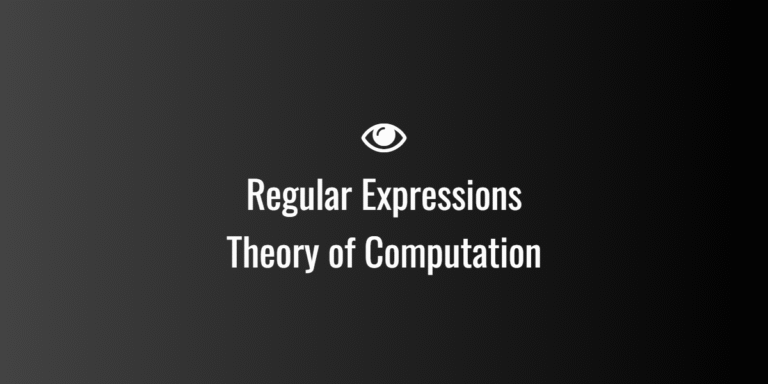
Nonconstructive Proofs — Proof Techniques in Theory of Computation
⭐ What Is a Nonconstructive Proof?
A nonconstructive proof demonstrates that something exists without directly building it.
You don’t produce:
- a machine
- a grammar
- a number
- a string
Instead, you rely on logic, general principles, or powerful theorems to show:
“Yes, such a thing must exist.”
Think of it like saying,
“I don’t have the exact key, but I can prove a perfect key must be somewhere.”
⭐ Simple Analogy (Everyday Example)
Imagine a city with 1 million people.
You want to prove that at least two people in the city have the same number of hairs on their head.
Can you point out exactly which two people?
Probably not.
But you can still prove they exist:
- No human has a billion hairs.
- No human has negative hairs.
- Let’s say the maximum possible hair count is 300,000.
- With 1 million people and only 300,001 possible hair counts…
- By the pigeonhole principle, at least two people must share the same count.
You proved the thing exists without identifying the individuals.
That’s classic nonconstructive reasoning.
⭐ Why Do We Use Nonconstructive Proofs in TOC?
In Theory of Computation, we often deal with:
- infinitely many strings
- uncountably many languages
- undecidable problems
- existence of machines with special properties
Many times, it’s impossible (or extremely hard) to construct the object explicitly.
But we can still prove it exists using logic.
Nonconstructive proofs help us do exactly that.
⭐ Simple Visual Diagram for Nonconstructive Proofs
Here’s the core idea in a diagram:
Claim: "Something Exists"
│
▼
Step 1: Use logic or theorems (no construction)
│
▼
Step 2: Show existence indirectly
│
▼
✔ Proof DoneOr in even simpler terms:
Prove → Not Build → But Still Confirm Existence⭐ Warm-up Mathematical Example
Claim:
There exist irrational numbers ( a ) and ( b ) such that ( a^b ) is rational.
A constructive proof would explicitly find such numbers.
A nonconstructive proof does not.
One elegant (but indirect) argument:
- We know ( \sqrt{2} ) is irrational.
- Now consider ( (\sqrt{2})^{\sqrt{2}} ).
- Either this number is rational or it is irrational.
Case 1: If it is rational, we are done.
Case 2: If it is irrational, then
( (\sqrt{2})^{\sqrt{2}} ) raised to ( \sqrt{2} ) equals 2,
which is rational.
We never found the pair explicitly.
But we proved such a pair must exist.
That’s the heart of a nonconstructive proof.
⭐ Nonconstructive Proof in Theory of Computation (Simple Example)
Claim:
There exists a language that no Turing machine can decide.
Nonconstructive Proof (Sketch):
- The set of all Turing machines is countable.
(You can list them as ( M_1, M_2, M_3, … )) - The set of all languages over an alphabet like {0,1} is uncountable.
(There are infinitely more languages than machines.) - If there are more languages than machines, then:
Some languages must have no Turing machine that decides them.
We didn’t build such a language.
We proved it must exist by comparing sizes of sets.
This is a classic nonconstructive result in TOC — extremely important.
⭐ Nonconstructive Proof for Closure Property (TOC Example)
Claim:
There exists a context-free language that is not regular.
Nonconstructive Approach:
- The famous pumping lemma guarantees that some languages cannot be regular.
- The lemma does not tell us which exact language fails.
- But it ensures that non-regular languages must exist.
Later, you might construct examples like ( { a^n b^n : n ≥ 1 } ).
But the first proof that such languages exist is nonconstructive.
⭐ Constructive vs Nonconstructive (Quick Comparison)
Here’s a simple table in plain language:
| Aspect | Constructive | Nonconstructive |
|---|---|---|
| Builds the object? | Yes | No |
| Uses direct steps? | Yes | Sometimes indirect |
| Feels hands-on? | Yes | Not always |
| Proves existence? | By construction | By logic or theorems |
| Common in TOC? | Very | Extremely, especially with undecidability |
Both are valuable.
Both appear everywhere in computation theory.




